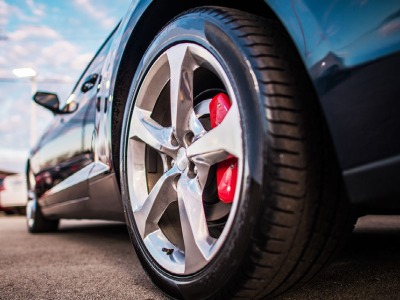Maintaining A Healthy Tire Pressure
 May 10, 2023
May 10, 2023

As a driver, it is important to understand the significance of tire pressure and how it can affect your driving experience. Tire pressure refers to the amount of air that is inside your vehicle’s tires. Maintaining proper tire pressure can enhance safety, improve fuel efficiency, and extend the life of your tires.
Why Is Tire Pressure Important?
Driving with underinflated or overinflated tires can lead to various safety issues such as decreased traction, reduced handling, and increased risk of a blowout. Underinflated tires can also cause the tire sidewalls to flex excessively, which can result in heat buildup and ultimately lead to a tire failure.
Additionally, driving with underinflated tires can decrease fuel efficiency. When tires are underinflated, there is more surface area in contact with the road, which increases rolling resistance and requires more energy to move the vehicle. This can result in decreased fuel economy and increased emissions.
How To Check Tire Pressure?
To maintain proper tire pressure, you should check your tire pressure regularly, ideally once a month. You can check your tire pressure using a tire pressure gauge. These gauges are inexpensive and can be purchased at most auto parts stores. To check tire pressure, remove the valve cap from the tire, press the gauge onto the valve stem, and record the reading. You should compare the reading to the recommended tire pressure for your vehicle, which can be found in the owner’s manual or on a sticker located on the driver’s side doorjamb.
It is important to note that tire pressure should be checked when the tires are cold, which means the vehicle has not been driven for at least three hours or has not been driven for more than a mile. This is because tire pressure increases as tires heat up during driving, which can result in an inaccurate reading.
What To Do if Tire Pressure Is Low?
If you find that your tire pressure is low, you should add air to your tires until they reach the recommended pressure. You can add air using an air compressor or by visiting a gas station that offers air pumps. Remember to replace the valve caps on your tires after adding air to prevent dust and dirt from entering the valve stem.
What Should My Tire Pressure Be?
The recommended tire pressure for your vehicle can be found in the owner's manual or on a sticker located on the driver's side doorjamb. It is important to follow the recommended tire pressure as specified by the manufacturer, as it is based on factors such as the weight of the vehicle, the size of the tires, and the intended use of the vehicle. The recommended tire pressure is typically expressed in pounds per square inch (PSI) and may be different for the front and rear tires. If you are unsure about the recommended tire pressure for your vehicle, consult the owner's manual or contact a professional mechanic for assistance.
How Often Should I Replace My Tires?
The frequency of tire replacement depends on several factors, such as the type of tire, driving habits, and road conditions. In general, most tires last between 25,000 to 50,000 miles. However, it is important to regularly inspect your tires for signs of wear and damage, such as low tread depth, cracks, punctures, or bulges.
It is also recommended to replace tires that are over six years old, regardless of their remaining tread depth. This is because the rubber compound used in tires can deteriorate over time, even if the tire has not been used frequently.
It is important to note that tires should always be replaced in sets of four to ensure even wear and optimal performance. Additionally, if you are experiencing unusual vibrations, noises, or handling issues, it is recommended to have your tires inspected by a professional mechanic as soon as possible.
Overall, it is important to prioritize tire maintenance and replacement to ensure safe and efficient driving.
In conclusion, maintaining proper tire pressure is an essential part of vehicle maintenance. By checking your tire pressure regularly and keeping your tires properly inflated, you can enhance safety, improve fuel efficiency, and extend the life of your tires.








